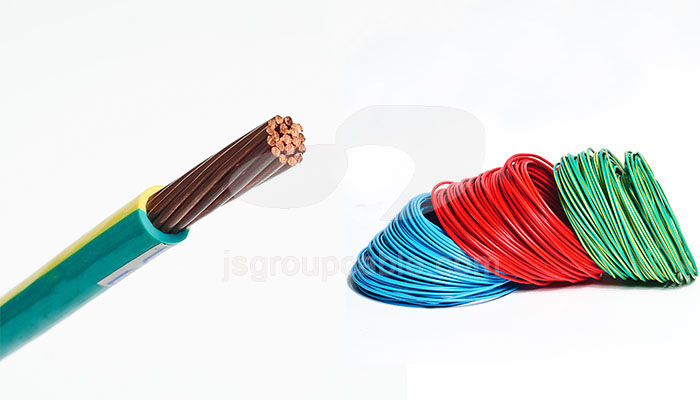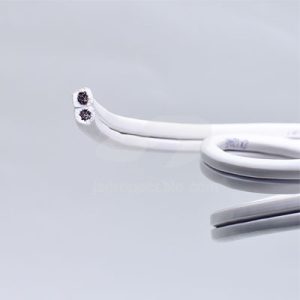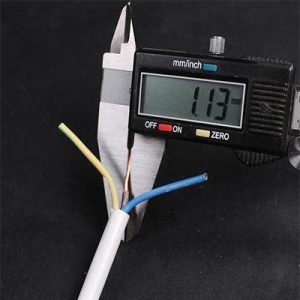- Offices Time:24 Hours Online
- Email:[email protected]
- WhatsApp:+8618339938759

Posted on March 10, 2023
How to do the quality inspection of wire and cable?
The quality inspection of wire and cable typically involves a series of tests and checks to ensure that the products meet the required standards and specifications.

Why quality inspection of wire and cable?
The quality inspection of wire and cable is important for several reasons:
1.Safety
Wire and cable are used in a wide range of applications, including building wiring, industrial equipment, and consumer electronics. Poor quality wire and cable can pose a safety risk by causing electrical fires, short circuits, and other hazards.
2.Reliability
Wire and cable are often used in critical applications where reliability is essential. If the wire or cable fails, it can cause equipment downtime, production delays, and other issues that can be costly and disruptive.
3.Compliance
Wire and cable must meet certain standards and regulations to be used in various applications. Quality inspection helps ensure that wire and cable meet these standards and comply with regulations such as UL, CSA, and RoHS.
4.Customer satisfaction
Poor quality wire and cable can lead to customer complaints, returns, and lost business. Quality inspection helps ensure that wire and cable meet customer expectations for performance, reliability, and safety.
Overall, quality inspection is important for ensuring that wire and cable are safe, reliable, compliant, and meet customer expectations.
How to do the quality inspection of wire and cable?
Here are the steps to perform a quality inspection of wire and cable:
1.Visual Inspection
Examine the outer jacket of the cable for any physical damage, such as cuts, cracks, or abrasions. Check for any signs of wear and tear that could compromise the cable’s integrity.

2.Measurement
Measure the diameter of the cable with a caliper to ensure that it matches the specifications provided. Verify that the cable’s length is correct, and it meets the required tolerance.

3.Electrical Tests
Conduct electrical tests to determine the cable’s performance. Some of the tests include continuity, insulation resistance, capacitance, and impedance.
4.Flexibility Tests
Test the cable’s flexibility by bending it in various directions to determine if it can withstand any form of movement.
5.Tensile Strength Test
Determine the tensile strength of the cable by pulling it with a calibrated tensile testing machine to measure the maximum force required to break the cable.
6.Environmental Tests
Test the cable’s resistance to environmental factors such as heat, moisture, and chemical exposure.
7.Flammability Test
Test the cable’s resistance to fire by subjecting it to a flame or heat source to determine if it meets the required fire rating.
8.Marking and Labeling
Ensure that the cable is correctly marked and labeled with the manufacturer’s name, cable type, and rating, and any other required information.
9.Packaging Inspection
Inspect the cable’s packaging for any damage, such as dents, scratches, or tears. Verify that the labeling on the packaging matches the information on the cable itself.
10.Documentation
Check that all the required documentation, such as certificates of conformity and test reports, are included with the cable. Verify that the documentation matches the product and packaging.
11.Sampling
Conduct sampling by selecting a few cables from a batch and testing them to represent the overall quality of the entire batch. This step helps identify any defects that may not be apparent through visual inspection or testing.
12.Record Keeping
Maintain a record of the inspection results and all the necessary documentation. This record will serve as evidence of compliance and help to identify any issues in the manufacturing process.
By following these steps, you can ensure that the wire and cable meet the required quality standards and specifications.Wire and cable quality inspection is a critical process that helps to ensure that the product meets the required quality standards and specifications. Following these steps will help to identify any issues and ensure that the product is safe and reliable for use.
Post categories
Most Popular Posts
-
The 136th Canton Fair welcomes you to participate!
October 12, 2024 -
High temperature cable introduction
July 26, 2024 -
Kenya Power and Energy Exhibition 2024
June 11, 2024 -
Introduction of rubber sheathed cable
June 5, 2024





